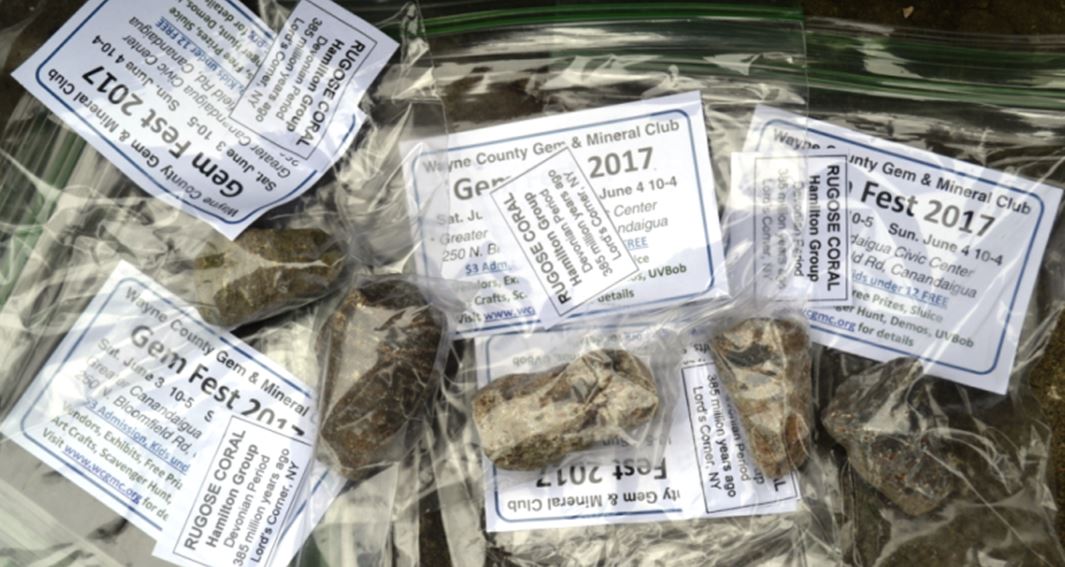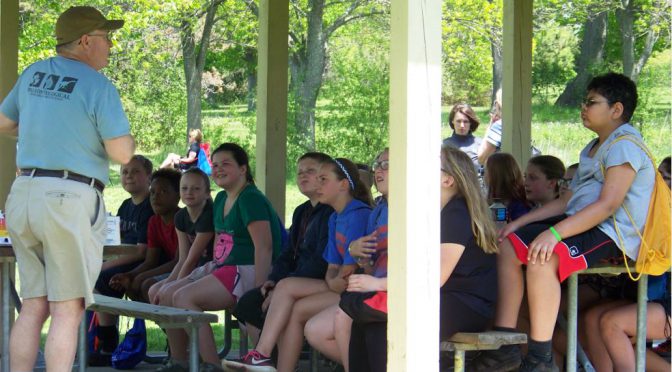I’d like to thank Julie Daniels for providing my name to the Seneca County 4-H Cornell Cooperative Extension for their Outdoor Education Field Day. When they called a couple months ago, it was with some trepidation that I accepted visiting with over 300 sixth graders rotating through ten 18 minute sessions at Sampson State Park on May 17th. The big yellow buses rolled in about 9:30 and by 9:48 AM the rotations began: five sessions in sequence, a 30 minute lunch period, and then five more sessions. Incredibly, the whole thing went like clockwork.
My overall topic was Geology and I chose to focus the short session on Rocks and Minerals, including a discussion of the three major rock types and showing them how the Rock Cycle works. I had lots of rocks to show and share, as many as possible from New York State. Oh, I had a few other interesting things to show: a piece of pumice that floats, a big amethyst piece from Thunder Bay, some acid and some calcite, and some magnetite and a magnet.
I was pleasantly surprised that many students could name the major rock types (although not too many rock names within them) and I was also pleased by the interest most students showed in the subject and also in telling me what they knew. Perhaps it was the environment, after all what sixth grader would object to spending a wonderful spring day outdoors, but right through the tenth session the students remained attentive.

I was asked a number of questions during the event, but one in particular struck me as thoughtful. After discussing the Rock Cycle (you know erosion, transport, sedimentation, burial, lithification, metamorphism, melting, crystallization, uplift, erosion, …rinse and repeat), one student asked me how long this cycle takes. Think about how you answer that for a sixth grader. It is not sufficient to simply say “a really long time” or “it depends”, even though both those answers are certainly accurate.

